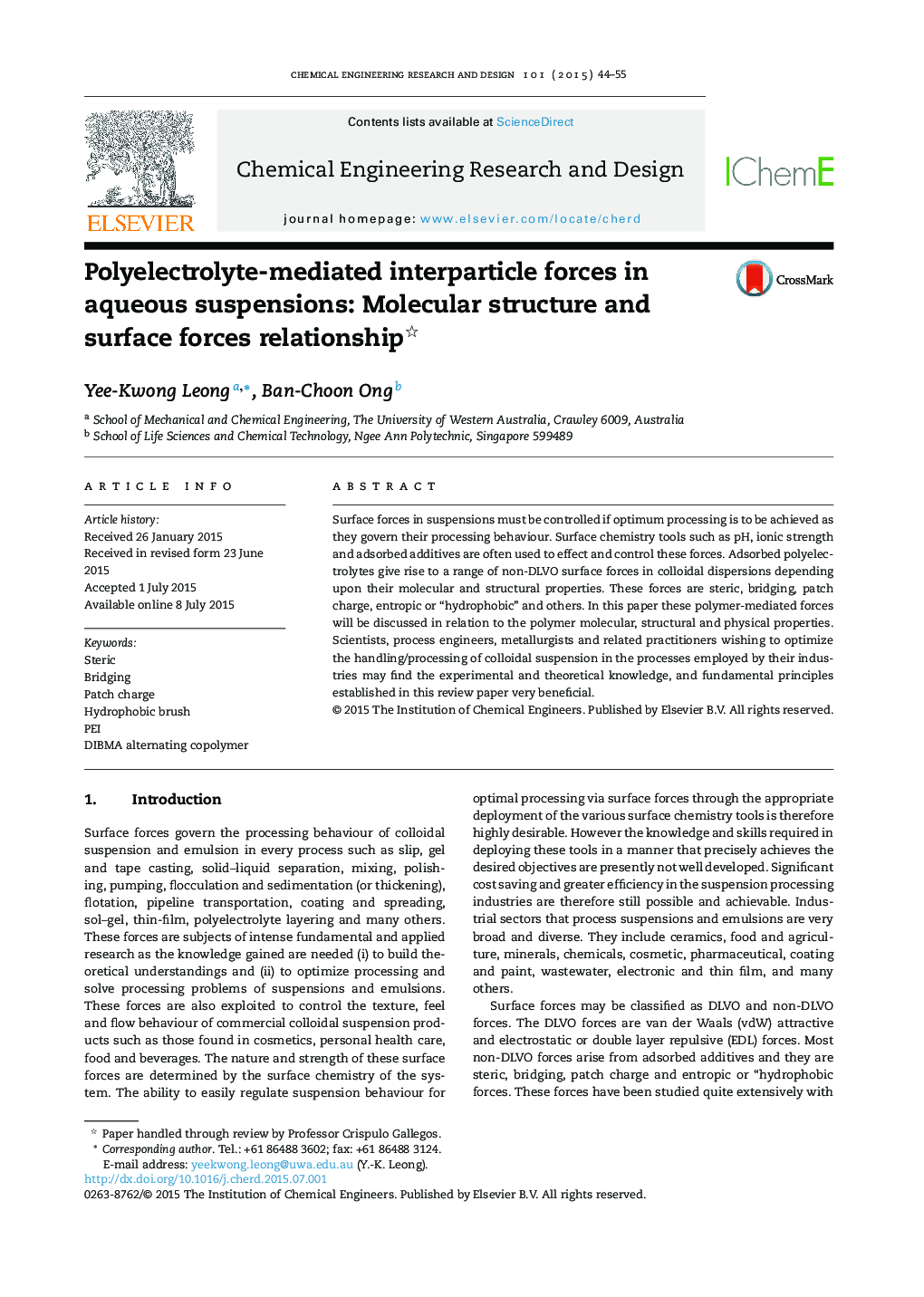| Article ID | Journal | Published Year | Pages | File Type |
|---|---|---|---|---|
| 621197 | Chemical Engineering Research and Design | 2015 | 12 Pages |
•Steric, bridging, patch charge and hydrophobic forces due to polyelectrolytes revealed.•Polyelectrolyte (PEL) structure related to these forces exposed.•The importance of inter- and intra-molecular forces in PEL shown.
Surface forces in suspensions must be controlled if optimum processing is to be achieved as they govern their processing behaviour. Surface chemistry tools such as pH, ionic strength and adsorbed additives are often used to effect and control these forces. Adsorbed polyelectrolytes give rise to a range of non-DLVO surface forces in colloidal dispersions depending upon their molecular and structural properties. These forces are steric, bridging, patch charge, entropic or “hydrophobic” and others. In this paper these polymer-mediated forces will be discussed in relation to the polymer molecular, structural and physical properties. Scientists, process engineers, metallurgists and related practitioners wishing to optimize the handling/processing of colloidal suspension in the processes employed by their industries may find the experimental and theoretical knowledge, and fundamental principles established in this review paper very beneficial.
